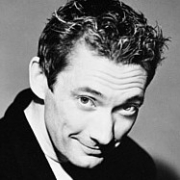

Metal Gear Solid also marks the first time that characters were given voice actors, with Solid Snake and Naked Snake being voiced by Akio Ōtsuka. By Metal Gear Solid 2, Kojima was inspired by the Sherlock Holmes novels to introduce a sidekick character in order to view Snake from a different perspective. This also gave Shinkawa difficulties in conceptualizing their visual appearances as a result of having little to no background details. While villains during the first games were given detailed backstories, the Cobra Unit members were intended to have little information known about them, resulting in a significant impact among players upon their deaths following their boss battles.


This resulted in Big Boss' clones from Metal Gear Solid and Metal Gear Solid 2 that had the same abilities as Solid Snake, the legendary Cobra Unit from Metal Gear Solid 3: Snake Eater who participated in World War II, and the Beauty and the Beast Corps from Metal Gear Solid 4: Guns of the Patriots that had few human traits. As a result of Snake's increasing experience in combat across the series, Kojima attempted creating more challenging antagonists for the boss battles. ĭuring their debuts, player characters Solid Snake and Raiden are meant to represent the player, while in following games, they acquire more defined personalities. While Solid Snake remained easy to illustrate as a result of him having a consistent design, and Big Boss' younger self, Naked Snake, was conceived via minor changes to the original version of Solid Snake, other characters' designs were more time-consuming. When illustrating characters, Shinkawa does not focus on minor details (such as eyes, which he sometimes tries not to draw), instead illustrating something more symbolic. This brought difficulties to the staff, as they had to make the faces more realistic. With the improvements offered by video game consoles like the PlayStation and PlayStation 2, the staff gave the characters a more realistic look starting with Metal Gear Solid 2: Sons of Liberty, although they initially had doubts about it. Because of the time skip between titles, a few of the characters were redesigned to fit in the game's setting. As a result of hardware limitations, Shinkawa designed them to appeal to gamers. Once Shinkawa started designing the characters in PlayStation's Metal Gear Solid, they were given their respective established visual appearances.
Cam clarke liquid snake interview movie#
Much as Metal Gear began as a pastiche of action movies of the time, characters were pastiches of contemporary action movie heroes. Critical reception of the game's cast has been positive, as publications have praised their personalities and roles within the series. Additionally, several of the characters he designed follow ideas from Kojima and other staff.
Cam clarke liquid snake interview series#
While the original Metal Gear games had their character designs modeled after Hollywood actors, the Metal Gear Solid games established a series of consistent designs based on Shinkawa's ideas of what would appeal to gamers. Additionally, the Metal Gear Solid prequels follow Big Boss's past as Naked Snake and development of a living legend via Venom Snake, as well as the origins of the various aforementioned organizations.

In the original Metal Gear Solid games, Solid Snake works with Otacon and Raiden while opposing Liquid Snake's FOXHOUND, Solidus Snake, the Patriots and Revolver Ocelot. The series initially follows mercenary Solid Snake given government missions of finding the Metal Gear weapon, resulting in encounters in the original Metal Gear games with Gray Fox and Big Boss in Outer Heaven and Zanzibar Land. Its setting features several soldiers with supernatural powers provided by scientific advancements. The Metal Gear franchise features a large number of characters created by Hideo Kojima and designed by Yoji Shinkawa. Promotional screenshot of Social Ops featuring the major characters of the series


 0 kommentar(er)
0 kommentar(er)
